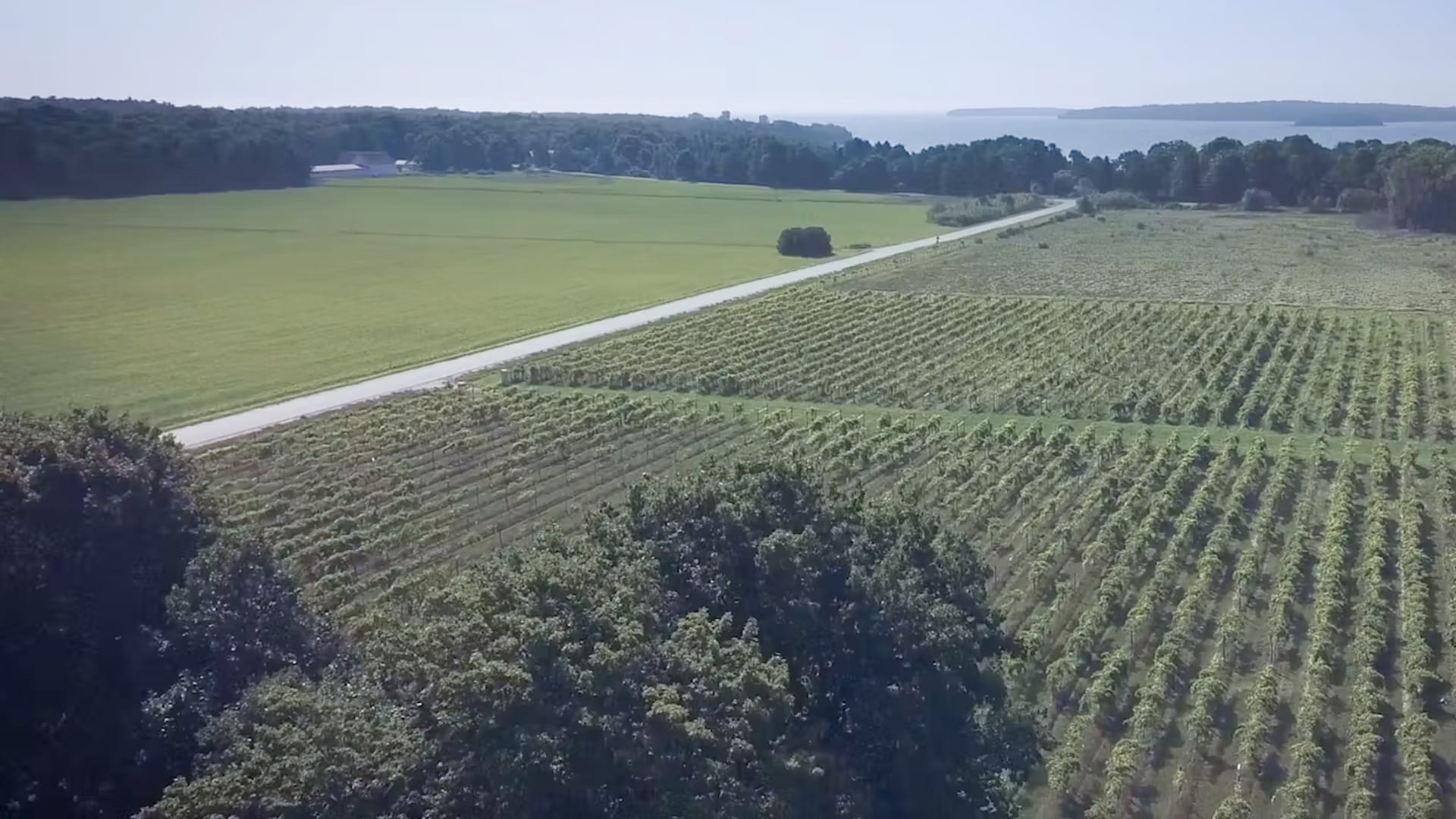About
Washington Island
An Island with Deep Agricultural Roots
Washington Island is situated in Lake Michigan, about seven miles northeast of the tip of the Door Peninsula in Door County, Wisconsin. It is approximately 5 miles wide by 6 miles long, and its year-round population numbers around 700.
The karst geography of the Niagara escarpment means the island soils are shallow and replete with limestone rocks. Despite these seemingly inhospitable growing conditions, the island has a long and storied agricultural history. It was first inhabited by the Potawatomi tribe, who cultivated corn, beans, squash, tobacco and sunflowers. The Potawatomi called the island Wassekiganeso, an Ojibwe word that translates as “his breast is shining,” and refers to the glint of the sun on the island’s limestone cliffs. The tribe referred to the narrow passage connecting Lake Michigan and Green Bay as “Death’s Door,” because its strong currents were treacherous to cross and often caused shipwrecks. Door County takes its name from this ominous moniker, although modern navigation aids have long since made the waters safe to traverse. As part of the wave of forced displacements inflicted on Indigenous tribes by the Indian Removal Act of 1830, the Potwawatomi were expelled from the island and relocated to reservations in Kansas and Oklahoma.
In the late 1800s, Washington Island was settled by immigrants from Iceland, who established a thriving fishing economy. Today, Washington Island comprises one of the largest and oldest Icelandic settlements outside of Iceland itself. As settlers from a broad swath of Sandinavian countries made their way to the island, they brought their own agricultural traditions, establishing a variety of farms on the island. Washington Island soon became known for growing and exporting cherries, apples, potatoes and maple syrup.

The advent of industrial agriculture, coupled with the extra challenge of shipping products to the mainland, has made it less and less profitable to grow commercially on the island. It’s hard for local farmers to compete with the bargain prices of the agribusiness giants, and there isn’t a clear incentive for younger generations to continue growing. It’s a sadly familiar story that we see playing out across the country.
The last commercial potato shipment from the island was in 1959. The fruit orchards were harvested through the 1970s. Many people living on the island today have memories of harvesting cherries for 25 cents a bucket. You can still see remnants of this history with many antique apple orchards remaining on the island, and the references to the “Old Potato Dock.”
Today, a handful of small-scale farmers grow vegetables and fruit for sales to island restaurants, farmers’ markets, and the grocery store. At Gathering Ground, we are continuing the legacy of the the farmers who came before us by caring for our soils, composting to return organic matter to the earth, growing tree crops like chestnuts, and finding cultivars of fruit trees that do well in our region with little-to-no spraying of pesticides. All of our workshops and educational programs are created with the goal of inspiring people to care about where their food comes from and to get involved in the process of growing and harvesting it.
Change starts at home. By teaching our own community how to revitalize the soil, we hope to inspire a new era of sustainable agriculture on Washington Island. Our ultimate aim is to show the country’s broader agricultural community a roadmap for healing the soil, fostering a self-sufficient economy, and planting for a sustainable future.
